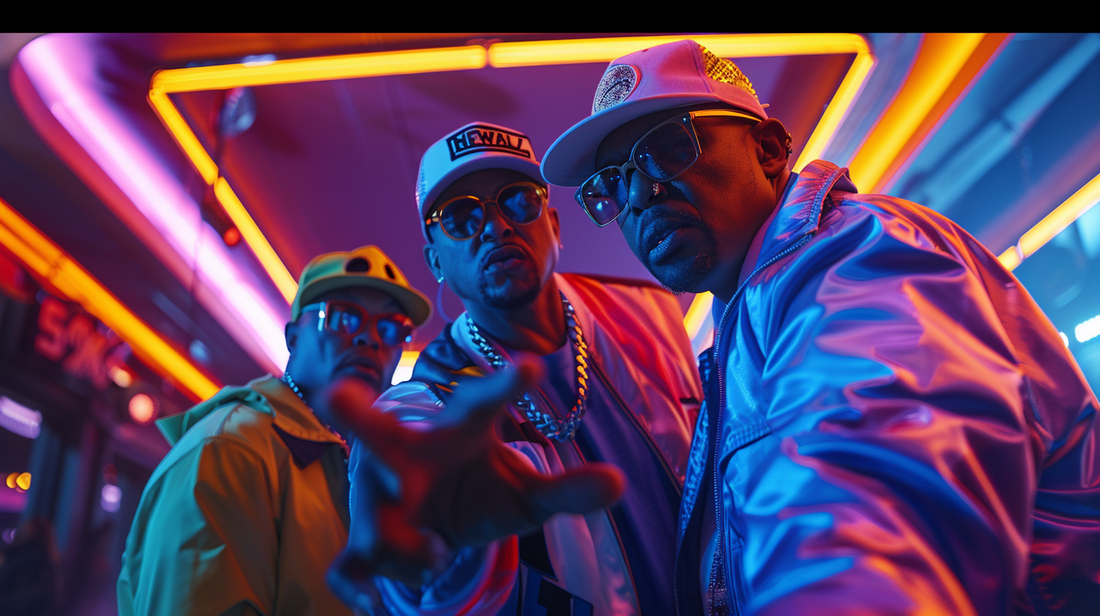
When 59Fifty Hats Dominated MTV Culture
Share
It was the summer of '86, and I was glued to my parents' wood-paneled TV set, watching Run-DMC's "Walk This Way" music video for what felt like the hundredth time. There they were – Reverend Run and DMC, their signature MLB fitted caps perfectly positioned atop their heads, creating an iconic image that would influence a generation. That moment crystallized something for me: the New Era 59Fifty wasn't just a baseball cap anymore; it had become a cultural touchstone.
The Birth of MTV and the Rise of the Fitted Cap
When MTV launched in 1981, nobody could have predicted how profoundly it would shape not just music, but fashion and culture at large. The network created a visual language for music, and the 59Fifty fitted hat became a crucial part of that vocabulary. Artists didn't just wear these caps; they made them characters in their visual stories.
The relationship between MTV and fitted caps wasn't accidental. The network's emergence coincided with hip-hop's golden age, when artists like LL Cool J made the Yankees fitted as much a part of their uniform as their gold chains. What started as authentic street style quickly became a cultural phenomenon, amplified by MTV's growing reach.
The Cultural Impact: Beyond Just Headwear
The 59Fifty's prominence on MTV represented more than just a fashion trend. It symbolized several key cultural shifts:
- The mainstreaming of urban culture
- The growing influence of street fashion on mainstream style
- The fusion of sports and entertainment
- The rise of brand consciousness in hip-hop
Iconic MTV Moments That Cemented the 59Fifty's Status
Several watershed moments stand out in the fitted cap's MTV journey:
1. Yo! MTV Raps (1988-1995)
The show became a daily showcase for fitted cap culture, with hosts Ed Lover and Doctor Dré making the 59Fifty a staple of hip-hop fashion. Their influence was so significant that certain teams' cap sales spiked after appearances on the show.
2. The Beastie Boys Era
The Beastie Boys brought fitted caps to alternative audiences, often sporting Angels and Athletics caps in their videos, creating a cross-cultural appeal that helped break down musical and fashion barriers.
Technical Evolution and Design Impact
The MTV era influenced how New Era approached cap design:
- Introduction of alternative colorways to match video aesthetics
- Enhanced focus on precise shape and structure for camera-readiness
- Development of special editions for music-related events
- Collaboration with artists and labels
The Perfect Fit: A Technical Breakdown
During the MTV era, getting the right fit became crucial as caps were now being scrutinized in close-up shots. This led to increased attention to sizing and fit details. (Check our fitted hat size calculator to find your perfect fit.)
Pros and Cons of the MTV-Era Impact
Pros:
- Expanded the market for fitted caps beyond sports fans
- Elevated the 59Fifty to fashion icon status
- Created new revenue streams for MLB teams
- Sparked innovative designs and collaborations
Cons:
- Led to mass commercialization of what was once authentic street culture
- Created artificial demand and price inflation
- Sometimes prioritized style over traditional team loyalty
Legacy and Modern Influence
Today's social media trends and influencer culture can be traced back to MTV's golden era. The network created a template for how fashion items become cultural icons through visual media. The 59Fifty's journey from baseball fields to MTV to social media represents a master class in cultural evolution.
Collecting MTV-Era Caps: A Guide
For collectors interested in MTV-era caps, consider these tips:
- Research specific videos and appearances for authenticity
- Focus on significant cultural moments
- Look for original releases rather than reissues
- Document provenance when possible
Conclusion: The Lasting Impact
The MTV era transformed the 59Fifty from sports equipment to a cultural artifact. It's a transformation that continues to influence how we think about headwear and fashion in general. As we see new generations discovering and reinterpreting the fitted cap, we're reminded that some cultural phenomena never truly fade – they just get remixed for a new audience.
The next time you adjust your fitted cap in the mirror, remember: you're not just wearing a hat – you're wearing a piece of cultural history that found its spotlight in the golden age of music television.